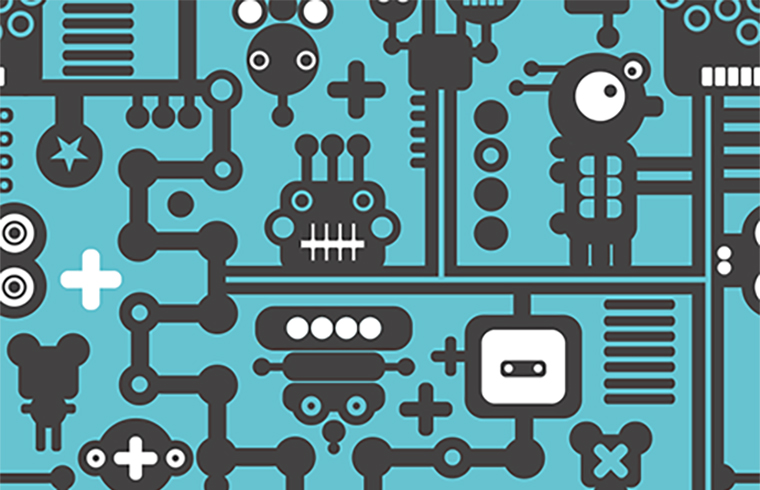
Robots to Heal You—From Inside
It’s the stuff of sci-fi dreams: tiny, self-propelling robots that whiz painlessly through the body to detect illness. In mechanical engineering, Assistant Professor On Shun Pak is part of a team that’s received a $2 million grant to make them reality.
In an episode of the mid-1990s TV show The Magic School Bus, the ebullient Ms. Frizzle takes her fourth-grade class on an excursion aboard her magically shrinking yellow bus to find out what’s making classmate Ralphie ill. Inside Ralphie’s sore throat, the students encounter an epic battle being waged between multiplying bacteria and virtuous white blood cells.
For decades, doctors have been snaking, pushing, and prodding diagnostic tools outfitted with cameras through their patients’ bodies to get a better look at what’s happening behind the skin. But the idea of a self-propelling tiny device decoding the internal processes of the human body has been the stuff of science fiction and child’s play. Until now.
The National Science Foundation has awarded a team of engineers from three universities—including Santa Clara University mechanical engineering Assistant Professor On Shun Pak—a $2 million, four-year grant to develop a new class of self-propelling diagnostic robots. Instead of the magic required to drive a tiny school bus through the body, these soft, pliant 3-D–printed robots will assist in their own propulsion.
Classified as MESo-C3 (magneto-electroactive soft, continuum, compliant, and configurable), these robots will have diameters between 0.1 and 10 millimeters. For scale, an adult male flea is typically 1 millimeter long.
Pak notes that self-propulsion is important because it is less damaging to the body. “Current diagnostic tools typically involve pushing, pulling, or screwing through the lumina of the human body,” he says. The goal of the collaboration between SCU, the University of Minnesota, and University of Utah—the latter of which is leading the project—is to gain “minimally invasive access to locations in the human body that are currently difficult or impossible to reach.”
Pak will receive $338,440 of the grant to assist with theoretical modeling, understand the propulsion dynamics, and support SCU undergraduate and graduate students’ research. “We will use tools and knowledge from mathematics, physics, and engineering to understand and predict the movement of these robots in different lumina of the human body, such as the intestines and blood vessels,” he says.
Like miniature Lewis and Clark explorers, these robots will eventually be able to fluidly snake through the natural pathways of human anatomy, opening up previously off-limits areas of the body’s most fragile and complex sectors, including the brain.
“Many disorders of the brain are difficult or impossible to treat due to the brain’s fragility and complex structure,” Pak says. “MESo-C3 could enable safe access to currently unreachable areas of the brain, which could fundamentally change our treatment and understanding of what is arguably our most important organ.”
Cancer screening and early detection could also be advanced by these robots, the team believes. “For instance, cancers of the gastrointestinal (GI) tract are some of the most common and most deadly, and the likelihood of survival is significantly increased with early detection, yet our population is still woefully underscreened,” Pak says. “MESo-C3 could make GI tract screening safer, less expensive, more effective, and less intimidating to patients.”
Now working to hire and train a team of students, Pak is excited to get to work on a project with potentially huge medical value. “From theory to experiments to prototyped robots that have significant medical applications—I’m grateful to be part of the process.”
Robots small enough to enter the bloodstream could be in the future. / Illustration courtesy iStock